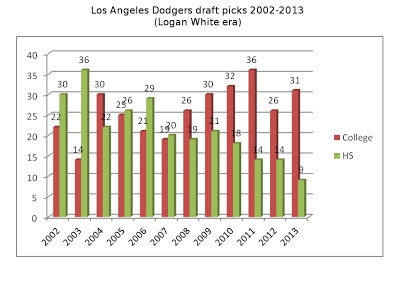If you’ve listened to virtually any episode of “Dugout Blues,” you’d know Chris Reed is “my boy,” as dubbed by Jared Massey. He was massively overdrafted, which put him behind the proverbial 8-ball (at least with me) from the start.
While he’s still likely a future reliever, Reed is showing at least the slightest chance of remaining in the rotation -- at least for now.
While he’s still likely a future reliever, Reed is showing at least the slightest chance of remaining in the rotation -- at least for now.
But Reed’s success this season isn’t without some concern,
because who else but his No. 1 fan bring up something negative?
Reed has a 3.50 ERA, 1.21 WHIP and a 3.61 FIP as a
23-year-old at Double-A Chattanooga. Those numbers are solid, especially since
he started the season poorly.
In his first nine appearances (eight starts, one relief, 46
2/3 IP), he had a 5.40 ERA, 1.58 WHIP, a .290 batting average against and a
1.67 ground out-to-fly out rate. He was 1-5 and looking like a permanent move
to the bullpen was nigh. Yet, Reed turned it around, and it’s been rather impressive.
Since that time (six starts, one relief appearance, 41 1/3
innings), he has a sparkling 1.31 ERA, 0.77 WHIP, a .177 BAA and a 2.18 GB/FB
ratio. Of his 25 hits allowed, just five have been for extra bases (two home
runs, two doubles and one triple). That’s elite-level performance by the 2011
first-round pick.
One of Reed's relief appearances was a five-inning outing because Dodger reliever Scott Elbert got the "start" on May 18.
He’s also throwing more innings than he ever has. In two of
Reed’s last three starts, he’s thrown at eight innings and has eight starts of
at least six innings in 14 total starts. On the season, he's averaging 5.8 innings per start. That's not great, but it shows he's not totally failing with the conversion from college reliever to pro starter.
Chris Reed is a ground ball pitcher, which is somewhat surprising because he profiled best as a fastball/power slider guy. But it appears his two-seam fastball is the reason his profile has changed.
He's also walking batters at a career-low rate this season (2.9 BB/9). He was a 4.4 last season, including 5.1 at Chattanooga.
If the better control, more grounders and fewer strikeouts formula works for Reed, that's great. Derek Lowe and Brandon Webb (not comparing Reed to either of them directly) had great careers using the sinker. Starters don't have to strikeout a batter an inning to be successful. Reed could revert to his strikeout ways if he moves to the bullpen, but right now, he looks like a he could have a future in the rotation.
With Reed's name having come up in trade talks (specifically regarding Ricky Nolasco), he couldn't have picked a better time to increase his trade value.
Photo credit: Courtesy of Brandon Lennox, True Blue LA





.gif)





